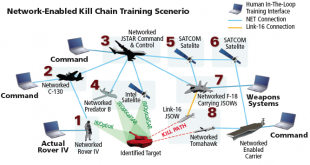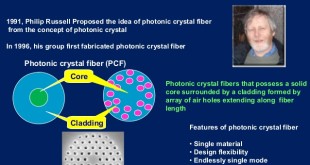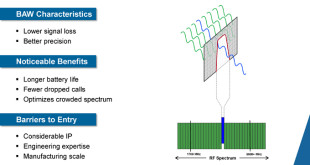Energetic materials and munitions are used across DoD in mission critical applications such as rockets, missiles, ammunition, and pyrotechnic devices. In these applications, energetic materials and munitions must perform as designed to ensure success in both training and combat operations. Every time a gun fires, lead leaches into the air. …
Read More »After initial Hype and amid Cyber Warfare threat, Network Centric Warfare approach is now being adopted realistically in various Militaries
As the 21st Century battlefield becomes increasingly complex and asymmetrical, military forces are striving to harness network technology to gain an operational advantage, by transforming traditional linear command structures and linking sensors, unmanned vehicles, command posts and ground troops to achieve decision superiority for full spectrum dominance. Network Centric …
Read More »DARPA DSO’s Disruptioneering accelerating innovation of most radical and potentially highest-payoff ideas for currently fielded platforms and building new capabilities for future systems.
DARPA’s Defense Sciences Office (DSO)—whose mission is to identify and pursue high-risk, high-payoff research initiatives across a broad spectrum of science and engineering disciplines—launched Disruptioneering in Spring 2017 which pushes for faster identification and exploration of bold and risky ideas with the goal of accelerating scientific discovery. The goal of …
Read More »DSO, called as DARPA’s DARPA identifies and pursues high-risk, high-payoff research initiatives to help U.S. win important technology races in hypersonics, space, autonomy, energetics, and stabilization.
DARPA’s Defense Sciences Office (DSO) identifies and pursues high-risk, high-payoff research initiatives across a broad spectrum of science and engineering disciplines and transforms them into important, new game-changing technologies for U.S. national security. Current DSO themes include frontiers in math, computation and design, limits of sensing and sensors, complex social …
Read More »Hollow-core optical fibers enable secure communications in data centers, accurate sensing gyro for Aerospace applications
Conventional optical fibers are fabulously successful, but they have profound limitations. They contain a glass core at the center of the fiber through which light is transmitted. However, not only does this glass center limit the speed of the light as it passes through, but it also adversely affects other …
Read More »DARPA GRIT program developing compact, tunable Gamma ray source for advanced accelerator technology, high-energy laser systems, and new x-ray and gamma ray detectors
Gamma rays are ionizing electromagnetic radiation, obtained by the decay of an atomic nucleus. Gamma rays are given off by stars, and by some radioactive substances. Gamma-rays travel to us across vast distances of the universe, only to be absorbed by the Earth’s atmosphere. Different wavelengths of light penetrate the Earth’s …
Read More »Surface-acoustic-wave (SAW) and bulk-acoustic-wave (BAW) Filters will be disruptor in the military RF and microwave industries
The complexity of current 4G/5G phones comes from the need to cover multiple bands. Modern modems like the ones used in mobile phones are compatible with multiple transmission bands, including 3G, 4G LTE, Wi-Fi, and Bluetooth. The radio frequency front-end (RFFE) section of cellphone includes components like antennas, LNAs, filters, …
Read More »Threats of hacking of digital IDs, driving develpment of unbreakable Quantum EPUF IDs containing 1,000 trillion atoms
We live in digitised, connected societies, in an Internet of Things (IoT) world where our reliance on software, hardware, and the networks that connect us, grows exponentially. Our increasing global reliance on what we hope and assume are secure networks, is profound. The threat of large-scale cyber-attack has become a …
Read More »Scientists solving major challenge of decoherence in turning quantum technology from potential to reality
‘The development of a “quantum computer” is one of the outstanding technological challenges of the 21st century. A quantum computer is a machine that processes information according to the rules of quantum physics, which govern the behaviour of microscopic particles at the scale of atoms and smaller. Quantum computers gain …
Read More »Rising importance of Non- Acoustic detection technologies of Stealthy submarines in Anti Submarine Warfare
Ship detection for offshore production operations, military activities, transportation and other marine applications is very important. Submarine is one of the most important weapon in modern wars. strategic submarines seem to be key to strategic stability, providing what is generally believed to be the most survivable nuclear second-strike force. Anti-submarine …
Read More » International Defense Security & Technology Your trusted Source for News, Research and Analysis
International Defense Security & Technology Your trusted Source for News, Research and Analysis









